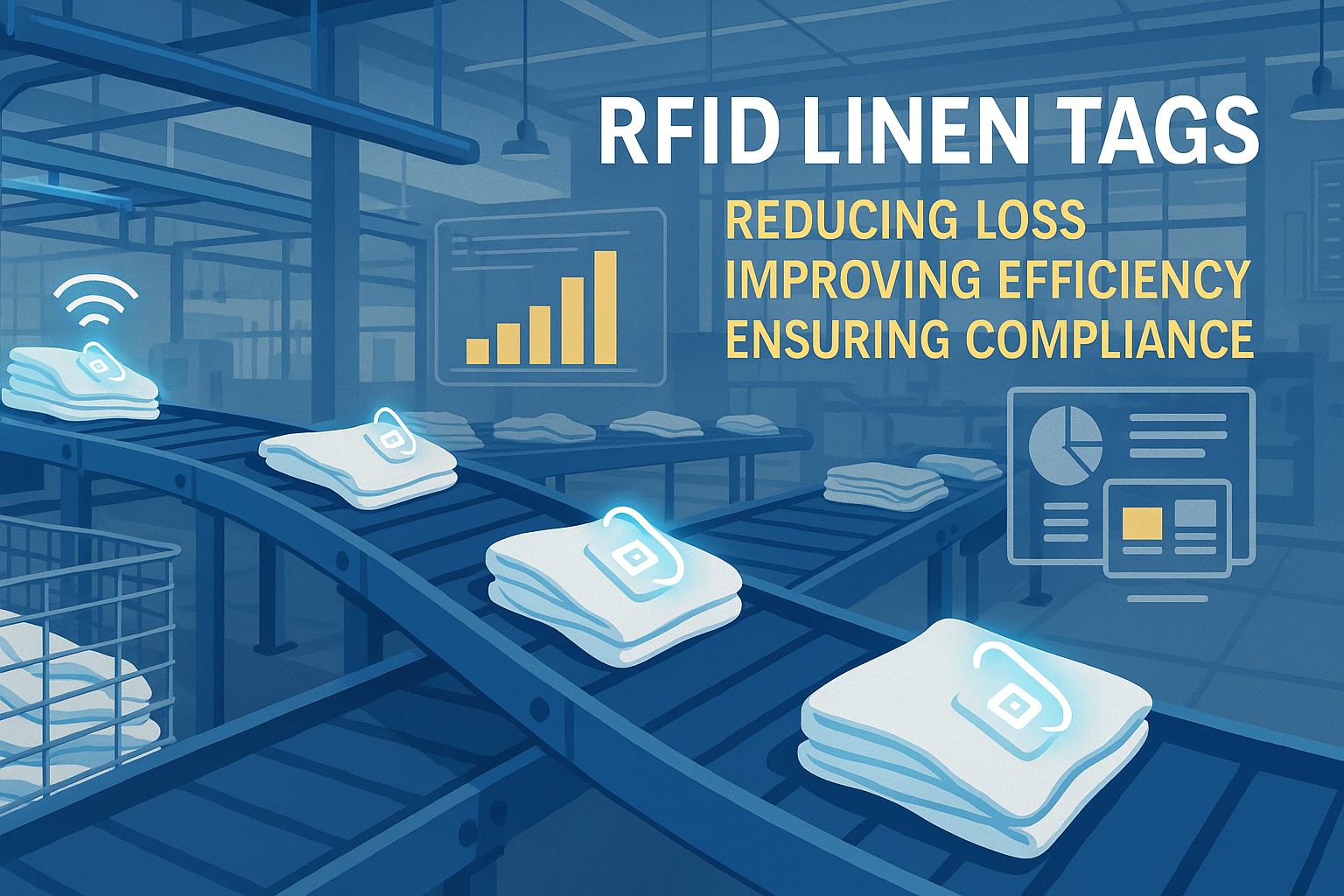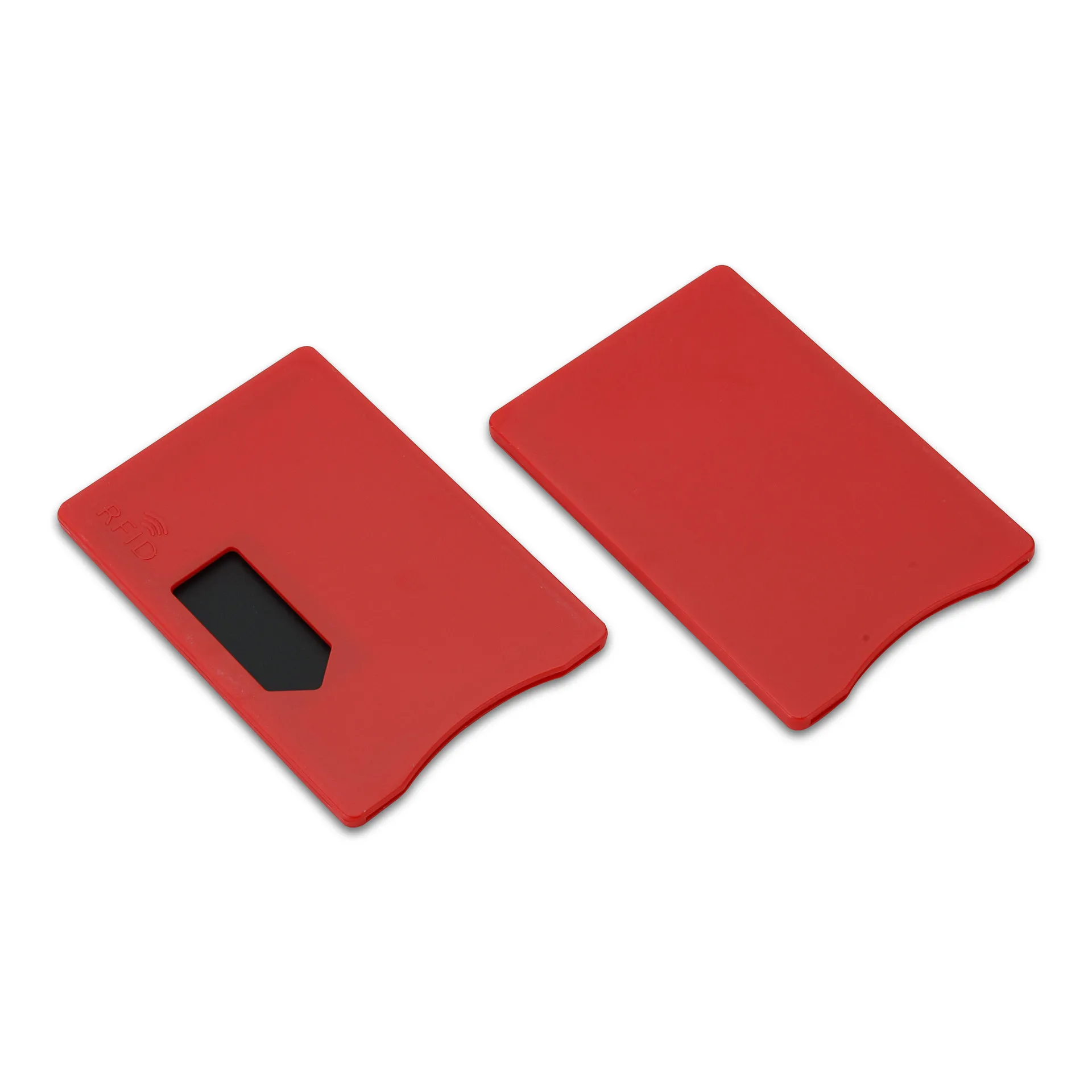
W jaki sposób tagi RFID przechowują dane?
Spis treści
Wstęp
Zrozumienie tego procesu nie ma wyłącznie charakteru akademickiego. Dla inżynierów projektujących inteligentne łańcuchy dostaw, programistów tworzących aplikacje zintegrowane z technologią RFID oraz menedżerów IT nadzorujących śledzenie zasobów na dużą skalę podstawowe mechanizmy pamięci RFID, kodowania danych i protokołów bezpieczeństwa mają kluczowe znaczenie dla wydajności, interoperacyjności i integralności danych.

Czym jest RFID i jak działa?
Czym jest RFID?
RFID (Radio Frequency Identification) to technologia bezprzewodowa, która automatycznie identyfikuje i śledzi obiekty za pomocą pól elektromagnetycznych. W przeciwieństwie do kodów kreskowych, RFID nie wymaga bezpośredniej linii widzenia i może przechowywać więcej danych bezpośrednio na tagu.
Kluczowe elementy systemu RFID
- Znacznik RFID (Transponder): Chip i antena wbudowane w etykietę lub przedmiot, które przechowują dane.
- Czytnik RFID (Interrogator): Wysyła sygnał radiowy w celu aktywacji tagu i odebrania jego danych.
- Oprogramowanie pośredniczące/systemowe: przetwarza, przechowuje i przekazuje dane do baz danych lub aplikacji.
Jak działa transmisja danych
Gdy czytnik RFID emituje sygnał o częstotliwości radiowej, antena tagu odbiera go i zasila chip (jeśli jest pasywny). Następnie chip moduluje i wysyła zapisane dane z powrotem do czytnika. Komunikacja ta różni się w zależności od częstotliwości:
- LF (niska częstotliwość): krótki zasięg, dobry do śledzenia zwierząt.
- HF (wysoka częstotliwość): powszechnie stosowana w technologii NFC i kartach inteligentnych.
- UHF (Ultra High Frequency): większy zasięg, większa prędkość odczytu – idealne rozwiązanie dla logistyki.
Wskazówka techniczna: Pasywne tagi UHF są najczęściej stosowane w przemysłowych łańcuchach dostaw, ponieważ są niedrogie i mogą przesyłać sygnał na odległość kilku metrów.
Przewodnik dla początkujących po programowaniu tagów RFID
Programowanie tagów RFID może odblokować potężne możliwości — od dostosowywania danych produktu po umożliwienie bezpiecznej kontroli dostępu. Chociaż dostępnych jest wiele narzędzi i podejść, konkretna metoda zależy od typu tagu, częstotliwości i zastosowania.
Obecnie pracujemy nad sprawdzonymi przykładami kodu i praktycznymi instrukcjami dotyczącymi bezpiecznego i skutecznego programowania tagów RFID. W tej sekcji wkrótce znajdą się:
- Praktyczne samouczki dotyczące korzystania z Arduino z modułami RFID.
- Kodowanie danych za pomocą TagWriter (Android) dla Tagi zgodne z NFC.
- Wykorzystanie zestawów SDK RFID i drukarki biurkowej do zastosowań korporacyjnych.
- Wskazówki dotyczące wyboru odpowiedniego formatu pamięci (ASCII, HEX, EPC).
Chcesz zacząć już teraz? W międzyczasie polecamy zapoznać się z poniższymi zasobami:
- Aplikacja NXP TagWriter– Kodowanie NFC dla systemu Android
- Biblioteka MFRC522 Arduino na GitHub– Biblioteka czytników RFID typu open source
- [Zestaw SDK lub narzędzia programistyczne dostawcy sprzętu] dla określonych modeli czytników
Potrzebujesz pomocy przy zapisywaniu danych na tagach RFID lub wyborze kompatybilnych narzędzi? Skontaktuj się z naszym zespołem technicznym w celu uzyskania spersonalizowanego wsparcia.
W jaki sposób tagi RFID przechowują dane wewnętrznie
W swej istocie tag RFID jest niewielkim urządzeniem pamięciowym z określonymi bankami pamięci. Zrozumienie wewnętrznej struktury pamięci ma kluczowe znaczenie podczas planowania rodzaju danych, które mają być przechowywane, oraz ich ilości.
Rodzaje pamięci w tagach RFID
- ROM (pamięć tylko do odczytu): Dane zapisane podczas produkcji. Nie można ich zmienić.
- EEPROM (Electrically Erasable): wielokrotnego zapisu; najczęściej stosowany w nowoczesnych systemach RFID.
- RAM: Pamięć tymczasowa, często wykorzystywana podczas aktywnych transakcji.
Typowe typy pamięci
- Tylko do odczytu (RO): Nie można zmieniać. Używane dla stałych identyfikatorów.
- Odczyt/zapis (RW): Możliwość modyfikacji za pomocą kompatybilnych czytników.
- WORM (Write Once, Read Many – jednokrotny zapis, wielokrotny odczyt): Po zaprogramowaniu dane są zablokowane.
Bazy pamięci w tagach EPCglobal Gen2 (UHF)
| Bank pamięci | Spis treści | Można zapisywać? |
|---|---|---|
| EPC | Identyfikator produktu (zwykle 96–128 bitów) | ✅ |
| TID | Unikalny identyfikator tagu/chipa | ❌ |
| Pamięć użytkownika | Dane dotyczące konkretnych zastosowań | ✅ |
| Zarezerwowane | Hasła dostępu/polecenia kill | ✅ (Ograniczone) |
Najlepsza praktyka: Używaj EPC dla identyfikatorów SKU lub produktów, a pamięć użytkownika dla dodatkowych danych, takich jak sygnatury czasowe, numery partii lub metadane logistyczne.
Formatowanie bitów i bloków
- Pamięć jest podzielona na bloki (16 lub 32 bity).
- Każdy blok może być adresowany indywidualnie.
- Kodowanie danych musi być zgodne z rozmiarem bloku i specyfikacją tagów.
Przykład: Tag z 512 bitami pamięci użytkownika ma 64 bajty dostępne do kodowania – zaplanuj strukturę danych odpowiednio do tego.

Jak bezpieczne są dane na tagach RFID?
Wraz z coraz większym wykorzystaniem technologii RFID w łańcuchach dostaw i produktach konsumenckich bezpieczeństwo danych stało się kwestią najwyższej wagi. Zrozumienie, w jaki sposób tagi RFID chronią — a czasem ujawniają — dane, ma kluczowe znaczenie dla bezpiecznego wdrażania tej technologii.
Czy tagi RFID mogą zostać zhakowane?
Tak — ale kontekst ma znaczenie. Chociaż podstawowe tanie tagi mogą być klonowane lub skopiowane, większość nowoczesnych systemów RFID wykorzystuje wiele warstw zabezpieczeń, w tym kontrolę dostępu i szyfrowanie.
Mechanizmy bezpieczeństwa w tagach RFID
| Funkcja bezpieczeństwa | Opis | Poziom ochrony |
|---|---|---|
| Ochrona hasłem | Blokuje nieautoryzowane odczyty/zapisy | Średni |
| Bity kontroli dostępu | Zdefiniuj uprawnienia do odczytu/zapisu dla każdego banku pamięci | Wysoki |
| Szyfrowanie (AES, DES) | Stosowane w tagach o wysokim poziomie bezpieczeństwa (np. w bankowości, kontroli dostępu) | Bardzo wysoka |
| Polecenia zabijania | Trwale wyłącz tag, aby zapobiec nadużyciom | Kontekstualny |
Typowe podatności
- Podsłuchiwanie: Atakujący przechwytują komunikację między czytnikiem tagów a urządzeniem.
- Klonowanie: Kopiowanie danych z tagu do innego tagu.
- Ataki typu „replay”: ponowne wykorzystanie przechwyconych danych transmisji.
Najlepsze praktyki dotyczące bezpiecznego wdrażania technologii RFID
- W przypadku danych krytycznych należy stosować tagi chronione hasłem lub szyfrowane.
- Unikaj przechowywania poufnych informacji bezpośrednio na tagach — przechowuj tylko odniesienia lub identyfikatory.
- Wdrożenie bezpiecznych baz danych zaplecza w celu weryfikacji danych tagów.
- Zabezpiecz lub dezaktywuj tagi po użyciu w kontekstach wrażliwych.
Ile danych mogą przechowywać tagi RFID?
Jednym z najczęściej zadawanych przez inżynierów pytań jest:
“Ile danych mogę zapisać na tagu RFID?”
Typowe pojemności pamięci RFID
| Typ tagu | Zakres pamięci | Przypadek użycia |
|---|---|---|
| Niska częstotliwość (LF) | 64–256 bitów | Identyfikatory zwierząt, karty dostępu |
| Wysoka częstotliwość (HF/NFC) | 128–4096 bitów | Karty inteligentne, zapasy |
| Ultra wysoka częstotliwość (UHF) | 96–8192 bity | Logistyka, śledzenie przemysłowe |
| Aktywny RFID | 32 KB+ | Dane z czujników, duże ładunki |
Czynniki wpływające na wydajność
- Częstotliwość tagów i model chipu.
- Wykorzystanie danych szyfrowanych lub sum kontrolnych.
- Typ aplikacji (np. kodowanie EPC vs zdefiniowane przez użytkownika).
Jakiego rodzaju dane są zazwyczaj przechowywane?
- Identyfikatory produktów (EPC)
- Numery partii lub serii
- Znaczniki czasu
- Dane z czujników (temperatura, ciśnienie) w aktywnych tagach
Wskazówka: Przechowuj na tagu tylko minimalną ilość niezbędnych danych, a szczegółowe informacje umieść w zewnętrznych bazach danych. Pozwoli to zmniejszyć wymagania dotyczące pamięci i poprawić wydajność.
RFID pasywny a aktywny: porównanie możliwości przechowywania danych
Wybór między pasywną a aktywną technologią RFID ma wpływ na koszt, pojemność danych i zasięg.
| Funkcja | Pasywna RFID | Aktywny RFID |
|---|---|---|
| Źródło zasilania | Obsługiwane przez czytnik | Wbudowana bateria |
| Pojemność danych | 96–8192 bity | 32 KB lub więcej |
| Zakres | Do 10 m | Do 100 m |
| Długość życia | Nieograniczona (bez baterii) | Ograniczona żywotnością baterii |
| Koszt | <$0,10 za tag | $10–$50 na tag |
Który wybrać?
- Tagi pasywne: idealne do inwentaryzacji, handlu detalicznego, kontroli dostępu.
- Aktywne tagi: Najlepsze do śledzenia zasobów w czasie rzeczywistym, logistyki, czujników IoT.
Przykłady z życia wzięte — jakie dane są przechowywane na tagach RFID?
Przyjrzyjmy się, jak działa przechowywanie danych RFID w różnych branżach.
W handlu detalicznym
- Numer identyfikacyjny produktu (EPC)
- Ceny, numery SKU i numery partii
- Dane dotyczące lokalizacji półki lub kategorii
W opiece zdrowotnej
- Identyfikator pacjenta
- Informacje dotyczące dawkowania leków
- Śledzenie sprzętu
W logistyce
- Identyfikatory przesyłek, sygnatury czasowe
- Kody kontenerów
- Śledzenie trasy i punktów kontrolnych
W śledzeniu zwierząt
- Identyfikator rasy, dokumentacja szczepień
- GPS lub identyfikatory lokalizacji (w aktywnych tagach)
Wgląd profesjonalisty: Większość systemów korporacyjnych łączy identyfikatory tagów z bazami danych w chmurze (ERP, WMS), co zmniejsza potrzebę przechowywania dużych zbiorów danych na samym tagu.
Jak dane są zapisywane na tagach RFID (proces kodowania)
Wymagania sprzętowe
- Moduł zapisu lub czytnika/zapisu RFID
- Kompatybilne oprogramowanie (TagWriter, Arduino IDE lub SDK)
- Tagi zgodne z technologią RFID
Typowy przebieg procesu kodowania
- Podłącz drukarkę do systemu lub mikrokontrolera.
- Wybierz typ i częstotliwość tagu (LF, HF, UHF).
- Wybierz format danych (EPC, HEX lub ASCII).
- Zapisz dane na tagu za pomocą poleceń oprogramowania.
- Zweryfikuj dane za pomocą funkcji odczytu.
Popularne formaty kodowania
| Format | Przykład | Przypadek użycia |
|---|---|---|
| EPC (96-bitowy) | 300833B2DDD9014000000001 | Numer identyfikacyjny produktu |
| HEX | 0xA1B2C3D4 | Przechowywanie danych binarnych |
| ASCII | “ITEM00123” | Czytelne ciągi znaków |
Potrzebujesz enkoderów klasy przemysłowej? Przejrzyj naszą ofertę. Zestawy do zapisu RFID dla systemów UHF i NFC.
RFID kontra kod kreskowy kontra NFC: porównanie sposobów przechowywania danych
| Funkcja | RFID | Kod kreskowy | NFC |
|---|---|---|---|
| Pojemność danych | 64 bity – 32 KB | 12–20 znaków | Do 4 KB |
| Odczyt zakresu | 1–100 m | 0,2–1 m | 0-10 cm |
| Nadaje się do ponownego zapisu? | Tak | NIE | Tak |
| Jednoczesne odczyty | Setki tagów | Po jednym na raz | Po jednym na raz |
| Trwałość | Wysoki | Niski | Średni |
Najważniejsze wnioski
- RFID: Najlepsze rozwiązanie dla środowisk o dużej prędkości i dużej ilości danych.
- Kod kreskowy: Prosty i tani sposób na statyczne identyfikatory.
- NFC: Idealne rozwiązanie do bezpiecznych interakcji na krótkim dystansie (np. płatności).
Zastanawiasz się nad przejściem z kodów kreskowych na RFID? Uzyskaj bezpłatną wycenę wdrożenia.
Często zadawane pytania dotyczące przechowywania danych RFID
Czy tagi RFID można przeprogramować?
Tak — większość tagów HF i UHF obsługuje wiele cykli zapisu, dopóki nie nastąpi zużycie pamięci.
Jak długo dane pozostają na tagu RFID?
Do 10 lat lub więcej dla tagów pasywnych, w zależności od jakości chipa.
Czy dane RFID są szyfrowane?
Niektóre tagi obsługują szyfrowanie AES/DES, inne opierają się na ochronie hasłem.
Czy mogę zaprogramować tagi RFID za pomocą smartfona?
Tak, jeśli są one kompatybilne z NFC (13,56 MHz), a Twój telefon posiada czytnik NFC.
Jakiego oprogramowania używa się do zapisu na tagach RFID?
TagWriter, Arduino IDE (z bibliotekami) lub zestawy SDK producenta.
Przyszłość przechowywania danych RFID
Przyszłość technologii RFID leży na styku Internetu rzeczy (IoT) i sztucznej inteligencji (AI) — gdzie tagi nie tylko przechowują dane, ale także aktywnie komunikują się z systemami chmurowymi i czujnikami.
Powstające innowacje
- Zwiększona gęstość pamięci dzięki technologii mikro-EEPROM
- Zintegrowane czujniki, które przechowują dane dotyczące temperatury lub ruchu
- Analiza RFID oparta na sztucznej inteligencji w celu automatyzacji procesu podejmowania decyzji
- Śledzenie autentyczności produktów dzięki technologii blockchain
Wnioski: Podsumowanie
Tagi RFID to niewielkie, ale wydajne nośniki danych, które stanowią podstawę nowoczesnej automatyki.
Od podstawowych struktur pamięci po zaawansowane szyfrowanie — zrozumienie sposobu przechowywania i przesyłania danych przez tagi RFID pozwala inżynierom, programistom i przedsiębiorstwom tworzyć inteligentniejsze i bezpieczniejsze systemy.
Najważniejsze wnioski:
- Wybierz typy tagów w oparciu o zasięg, pojemność i zastosowanie.
- W przypadku danych wrażliwych należy stosować bezpieczne, chronione hasłem kodowanie.
- Zintegruj RFID z systemami zaplecza w celu zapewnienia skalowalności.
Potrzebujesz pomocy przy projektowaniu lub programowaniu systemu RFID?
Skontaktuj się z naszym zespołem w zakresie niestandardowych rozwiązań RFID, pozyskiwania sprzętu i wsparcia wdrożeniowego.

Ray Zhou
Ten artykuł został napisany przez Raya Zhou, eksperta w dziedzinie technologii RFID z ponad 10-letnim doświadczeniem w branży.
Uwagi
Gorące produkty

Czym jest zarządzanie odpadami za pomocą technologii RFID
Wyobraź sobie miasto, w którym każdy kosz na śmieci „mówi” – nie dosłownie, ale za pomocą niewielkiego chipa, który informuje system, kiedy jest pełny, kiedy został opróżniony i gdzie trafiły śmieci. Tak właśnie działa obecnie system zarządzania odpadami oparty na technologii RFID.

Czym są uszczelnienia śrub i jakie są ich zastosowania? | Kompletny przewodnik
W globalnym handlu i logistyce plomby odgrywają kluczową rolę w zapewnianiu bezpieczeństwa i zgodności ładunków. Te małe, ale potężne urządzenia są przeznaczone do blokowania kontenerów transportowych, przyczep i drzwi ładunkowych za pomocą mechanizmu zabezpieczającego przed manipulacją.

Czym jest ochraniacz karty RFID? Korzyści, przypadki użycia i przewodnik zakupu
Technologia RFID (Radio Frequency Identification) jest wszędzie: w kartach kredytowych, identyfikatorach, przepustkach, kluczach do pokoi hotelowych i nie tylko. Oferuje szybkość i wygodę, ale otwiera również drzwi do nowego rodzaju kradzieży cyfrowej zwanej "skimmingiem". W tym miejscu pojawia się ochrona kart RFID.

Opaski RFID na rękę na imprezy: Przewodnik zakupów hurtowych dla organizatorów
Opaski RFID na nadgarstki na imprezy stają się rozwiązaniem dla organizatorów, którzy potrzebują szybszego wejścia, zapobiegania oszustwom i płatności bezgotówkowych na koncertach, festiwalach i obiektach sportowych. W przeciwieństwie do biletów papierowych lub kodów QR, te inteligentne opaski na rękę wykorzystują wbudowane chipy, aby usprawnić dostęp, zabezpieczyć transakcje i poprawić wrażenia gości.

Jak znacznik RFID na przedniej szybie usprawnia kontrolę dostępu do pojazdu i systemy poboru opłat drogowych
W dzisiejszym szybko zmieniającym się świecie identyfikacja pojazdów musi być szybka, bezpieczna i bezdotykowa. Znacznik RFID na przedniej szybie zapewnia właśnie to - niezawodny sposób zarządzania poborem opłat, parkowaniem i dostępem do bramek bez zatrzymywania pojazdów.

Korzyści z tagów RFID do bielizny w pralniach komercyjnych
Zarządzanie pralnią w szpitalach, hotelach lub dużych pralniach to duże zadanie. Każdego dnia tysiące prześcieradeł, ręczników i uniformów jest pranych, sortowanych i wysyłanych z powrotem. Jednak problemy takie jak zagubiona pościel, błędy w sortowaniu i ręczne liczenie mogą kosztować firmy dużo pieniędzy. Na przykład, średniej wielkości hotele mogą tracić ponad $200,000 każdego roku z powodu zaginionej pościeli.
W tym miejscu z pomocą przychodzą znaczniki RFID Linen Tag.
Tagi
POWIĄZANE BLOGI

Czym jest zarządzanie odpadami za pomocą technologii RFID
Wyobraź sobie miasto, w którym każdy kosz na śmieci „mówi” – nie dosłownie, ale za pomocą niewielkiego chipa, który informuje system, kiedy jest pełny, kiedy został opróżniony i gdzie trafiły śmieci. Tak właśnie działa obecnie system zarządzania odpadami oparty na technologii RFID.

Czym są uszczelnienia śrub i jakie są ich zastosowania? | Kompletny przewodnik
W globalnym handlu i logistyce plomby odgrywają kluczową rolę w zapewnianiu bezpieczeństwa i zgodności ładunków. Te małe, ale potężne urządzenia są przeznaczone do blokowania kontenerów transportowych, przyczep i drzwi ładunkowych za pomocą mechanizmu zabezpieczającego przed manipulacją.

Czym jest ochraniacz karty RFID? Korzyści, przypadki użycia i przewodnik zakupu
Technologia RFID (Radio Frequency Identification) jest wszędzie: w kartach kredytowych, identyfikatorach, przepustkach, kluczach do pokoi hotelowych i nie tylko. Oferuje szybkość i wygodę, ale otwiera również drzwi do nowego rodzaju kradzieży cyfrowej zwanej "skimmingiem". W tym miejscu pojawia się ochrona kart RFID.




